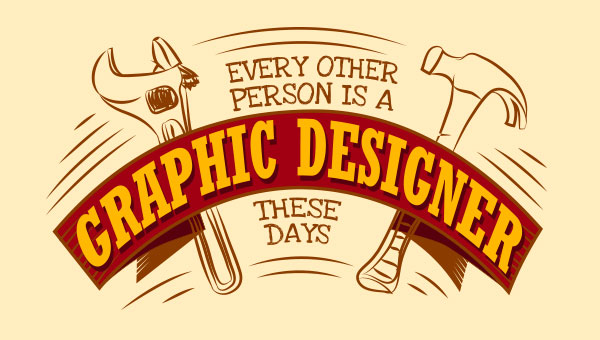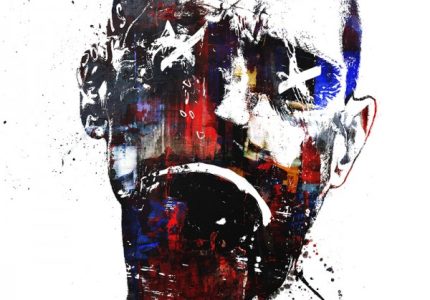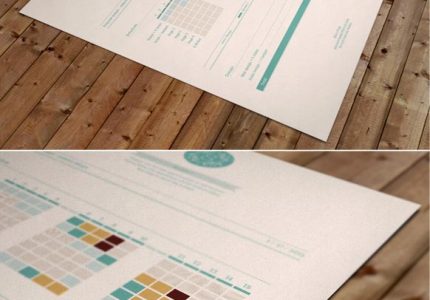Overview of the Graphic Design Bursary
The Graphic Design Bursary offers aspiring designers a valuable opportunity to develop their skills and advance their careers through financial support and mentorship. Designed to support talented individuals passionate about visual communication, this bursary aims to foster creativity and innovation in the field of graphic design. Participants can benefit from resources, networking, and practical experience that can significantly boost their professional journey.
Definition and Purpose
The Graphic Design Bursary is a financial aid program aimed at supporting aspiring graphic designers in their educational pursuits. It provides monetary assistance to students enrolled in graphic design courses or related programs, helping to alleviate the costs of tuition, materials, and other educational expenses. The primary purpose of the bursary is to promote creativity and professional development within the field of graphic design by making learning more accessible to talented individuals who may face financial barriers. This initiative encourages diversity and innovation in the industry by enabling students from various backgrounds to pursue their passion for design and develop their skills without the burden of financial stress.
Eligibility Criteria
The Graphic Design Bursary is a financial aid opportunity aimed at supporting aspiring graphic designers in pursuing their education and professional development. This bursary provides monetary assistance to eligible students, enabling them to focus on their studies without financial stress.
Eligibility criteria for the Graphic Design Bursary typically include the following:
- Applicants must be enrolled or intending to enroll in a recognized graphic design program or institution.
- Open to students at undergraduate or postgraduate levels.
- Individuals should demonstrate a strong passion and aptitude for graphic design.
- Applicants must provide evidence of financial need or hardship.
- Must be a citizen or legal resident of the country offering the bursary.
- Submission of a portfolio or relevant work samples may be required.
- Applicants should meet any additional criteria specified by the bursary provider, such as academic performance or community involvement.
Types of Bursaries Available
The Graphic Design Bursary provides financial support to students pursuing education and training in the field of graphic design. It aims to promote creative talent and support aspiring designers by easing their financial burden during their studies.
There are various types of bursaries available within this field, including merit-based bursaries awarded for academic excellence, need-based bursaries designed for students from economically disadvantaged backgrounds, and specialized bursaries targeting specific groups such as women, minorities, or international students. Additionally, some programs offer industry-specific bursaries to support students specializing in areas like digital media, branding, or illustration within graphic design.
Application Process
The application process for the graphic design bursary is designed to be straightforward and accessible for aspiring students. Applicants are required to submit their portfolio, a completed application form, and a personal statement outlining their passion for graphic design and career aspirations. Ensuring all materials are prepared thoughtfully increases the chances of securing this valuable opportunity to support their education and creative development.
How to Submit an Application
To apply for the graphic design bursary, you need to carefully follow the application process outlined by the organization offering the bursary. Begin by gathering all necessary documents, such as your portfolio, academic transcripts, and a personal statement explaining your interest in graphic design and how the bursary will assist your studies. Submit your application through the designated online portal or email address provided on the official website. Ensure that you complete all required fields and attach all supporting materials before the deadline. Double-check your application for accuracy and completeness to maximize your chances of success.
Required Documentation
The application process for the graphic design bursary involves submitting the required documentation to demonstrate your eligibility and creativity. Applicants should carefully follow the instructions to ensure their application is complete and considered for review.
- Completed application form
- Portfolio showcasing your best graphic design work
- Academic transcripts or proof of enrollment in a design-related course
- Letter of motivation explaining your interest in graphic design and how the bursary will support your goals
- Letter of recommendation from a teacher or mentor familiar with your work
- Copy of identification or relevant personal documentation
Important Deadlines
The application process for the graphic design bursary involves submitting a completed application form along with a portfolio showcasing your best design work. Applicants are usually required to include a personal statement explaining their interest in graphic design and how the bursary will support their educational goals. It is important to carefully follow the instructions provided on the application portal to ensure all required documents are included.
Important deadlines for the graphic design bursary typically include the submission deadline, which is often at the end of a specific month, such as March 31st or April 15th. Some bursaries may have early submission deadlines for shortlisted candidates or supplementary deadlines for additional documents. It is advisable to check the official website regularly to stay updated on these dates and avoid missing vital submission windows.
Selection Process
The selection process for a graphic design bursary is a critical step to identify talented and deserving candidates. It involves a thorough review of applications, portfolios, and sometimes interviews to assess each applicant’s creativity, technical skills, and passion for design. This process ensures that the most suitable individuals are awarded the bursary, providing them with valuable opportunities to advance their careers in the competitive field of graphic design.
Evaluation Criteria
The selection process for the graphic design bursary involves a comprehensive review of applicants’ portfolios, academic records, and personal statements to identify individuals with exceptional creativity and technical skills. Candidates may also participate in interviews or design challenges to demonstrate their aptitude and passion for graphic design. The evaluation criteria focus on originality, proficiency in design tools, conceptual thinking, and the potential for growth in the field.
Interview and Presentation Procedures
The selection process for the graphic design bursary involves a thorough review of applicants’ portfolios, academic records, and relevant experience to identify talented individuals with a passion for design. Shortlisted candidates are then invited to participate in an interview to assess their creativity, technical skills, and motivation for pursuing a career in graphic design.
During the interview, candidates are asked to discuss their previous work, inspiration sources, and future goals. They may also be given a brief design task to evaluate their problem-solving abilities and conceptual thinking in real-time. This helps the selection panel gauge each applicant’s potential and dedication to the craft.
The presentation procedures require shortlisted candidates to prepare a professional portfolio presentation showcasing their best work. They should be able to articulate their design process, inspiration, and techniques used. The presentation is often followed by a Q&A session, providing an opportunity for applicants to clarify their ideas and demonstrate their communication skills. Overall, these procedures ensure that the most deserving candidates are selected for the graphic design bursary based on talent, creativity, and potential.
Notification and Acceptance
The selection process, notification, and acceptance for the graphic design bursary are designed to ensure a transparent and fair opportunity for aspiring designers. Candidates are typically required to submit an application along with a portfolio demonstrating their skills and creativity. The selection committee reviews all submissions based on originality, technical proficiency, and potential for growth.
Once the review process is complete, selected candidates are notified through email or official communication channels. The notification includes details about the next steps, including acceptance procedures and deadline for confirmation. Applicants who are not selected receive a courteous notification informing them of the outcome.
- Applicants submit their application forms and portfolios by the specified deadline.
- The selection committee evaluates all submissions thoroughly.
- Top candidates are shortlisted based on predefined criteria.
- Notification of selection is sent via email or official communication channels.
- Selected candidates confirm their acceptance within the given timeframe to secure the bursary.
Benefits of the Bursary
The graphic design bursary offers students a valuable opportunity to pursue their creative passions without the burden of financial stress. By providing financial support, it enables aspiring designers to focus on honing their skills, gaining practical experience, and building their portfolios. This investment in education can open doors to prestigious internships, networking opportunities, and a stronger foundation for a successful career in the competitive world of graphic design.

Financial Support

The graphic design bursary provides essential financial support that allows students to focus fully on developing their creative skills without the burden of financial stress. This support helps cover tuition fees, purchasing necessary software, and other educational expenses, making quality education more accessible. Additionally, the bursary can open doors to valuable networking opportunities and industry exposure, which are crucial for establishing a successful career in graphic design. Ultimately, it fosters talent development by providing stability and encouraging students to pursue their passions confidently.
Mentorship and Networking Opportunities
The graphic design bursary offers a range of valuable benefits, including financial support that helps students focus on their studies without the burden of significant expenses. Participants also gain access to exclusive mentorship programs, connecting them with experienced professionals who can provide guidance, industry insights, and career advice. Additionally, networking opportunities provided by the bursary enable students to build relationships within the creative industry, opening doors to internships, collaborations, and future employment prospects. Overall, these benefits significantly enhance a student’s educational experience and professional growth in the field of graphic design.
Access to Resources and Workshops
Participating in a graphic design bursary provides numerous advantages, including access to valuable resources and workshops that can significantly enhance your skills and career prospects.
- Financial support to pursue affordable or advanced training in graphic design.
- Access to premium design software and tools that might otherwise be cost-prohibitive.
- Opportunities to attend workshops and seminars led by industry professionals.
- Networking opportunities with mentors, peers, and potential employers.
- Hands-on experience through real-world projects and collaborative efforts.
- Guidance on building an impressive portfolio to showcase your talents.
- Enhanced understanding of industry trends, techniques, and best practices.
Tips for a Successful Application
A successful application for a graphic design bursary can open doors to incredible opportunities and help kickstart your creative career. To stand out among many applicants, it’s essential to showcase your skills, passion, and unique perspective in the best possible way. In this article, we’ll explore valuable tips to enhance your application and increase your chances of securing this valuable support for your artistic journey.
Preparing a Strong Portfolio
Creating a compelling portfolio is essential for securing a graphic design bursary. Begin by selecting your best and most relevant work that demonstrates a range of skills and styles. Focus on showcasing projects that highlight your creativity, technical ability, and understanding of design principles. Organize your portfolio logically, ensuring each piece has context and explains your process. Tailor your selection to align with the goals of the bursary, emphasizing work that reflects the values and focus of the organization. Pay attention to presentation; use high-quality images and consistent formatting to create a polished look. Additionally, include brief descriptions for each project to provide insight into your thinking and problem-solving approach. Finally, proofread thoroughly to avoid any errors, as attention to detail reinforces your professionalism and commitment to excellence in graphic design.
Writing a Convincing Personal Statement
Crafting a compelling personal statement for a graphic design bursary requires showcasing your passion, skills, and unique perspective. Start by clearly articulating your inspiration for pursuing graphic design, highlighting any relevant experiences or projects that demonstrate your talent and dedication.
Be specific about your achievements, such as successful designs, competitions, or collaborations, and explain how these have shaped your career ambitions. Emphasize your understanding of current design trends and your commitment to continuous learning to stand out as a motivated candidate.
Align your goals with the objectives of the bursary program, showing how the financial support will enable you to further develop your skills and contribute to the creative community. Use a genuine and personal tone to convey your enthusiasm and authenticity, making your application memorable and convincing.
Lastly, proofread meticulously for clarity, coherence, and professionalism to ensure your personal statement leaves a positive impression on the evaluators.
Securing Recommendations
Securing strong recommendations is essential for a successful application for a graphic design bursary. Begin by selecting individuals who are familiar with your skills, dedication, and passion for design, such as professors or professional mentors. Ensure you provide your recommenders with clear information about the bursary, your achievements, and your goals so they can tailor their letters effectively. Prepare a personal portfolio or résumé to share with your recommenders, highlighting your best work and relevant experiences. Follow up politely to remind them of your deadline and express gratitude for their support. Additionally, maintain good relationships with your mentors throughout your studies or projects, as ongoing communication can lead to more personalized and impactful recommendations. Ultimately, a well-crafted recommendation that speaks authentically to your potential can significantly enhance your chances of securing the graphic design bursary.
Alternatives to the Bursary
When exploring opportunities for funding a graphic design education, students often look beyond traditional bursaries. Alternatives to the bursary can provide valuable financial support and access to resources, helping aspiring designers pursue their dreams without excessive financial burden. Understanding these options can open new pathways for education and professional growth in the competitive field of graphic design.
Scholarships and Grants
When seeking financial support for studying graphic design, there are several alternatives to bursaries, scholarships, and grants. Students can consider student loans, which provide funding that is repaid over time after graduation. Additionally, part-time work or internships related to graphic design can offer both income and valuable experience. Crowdfunding campaigns on platforms like GoFundMe or Kickstarter may also be a viable option, allowing students to raise funds from friends, family, and the community. Many design studios or companies offer paid apprenticeships or sponsorship programs that provide financial support and practical training. Finally, tuition fee installment plans offered by educational institutions enable students to spread out payments, making education more accessible without the need for external funding sources.
Internships and Apprenticeships
For aspiring graphic designers seeking alternatives to bursaries, internships, and apprenticeships, there are several pathways to develop skills and gain experience. Enrolling in online courses and tutorials can enhance your technical abilities and expand your creative horizons. Participating in design challenges and competitions offers practical experience and valuable portfolio pieces. Volunteering for non-profit organizations or community projects allows you to contribute your skills while building your network. Attending workshops, seminars, and industry events can keep you updated with current trends and connect you with professionals. Freelance work or personal projects also provide hands-on experience and help establish your unique style in the competitive field of graphic design.
Student Loans and Funding Options
For students pursuing a graphic design bursary, exploring alternative funding options can be essential. Scholarships offered by private organizations, art foundations, and industry associations often provide valuable financial support without the repayment obligations typical of student loans. Many universities and colleges also have merit-based or need-based scholarships specifically for students in creative fields like graphic design. Crowdfunding platforms and sponsorship opportunities can additionally help raise funds for course fees and equipment. Moreover, part-time work related to design, internships, and freelancing can supplement income and reduce reliance on formal bursaries or loans. By researching a diverse range of funding sources, aspiring graphic designers can find tailored financial solutions that support their educational and career goals.





